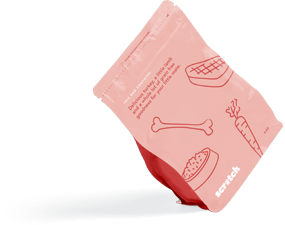The Dog-friendly plant guide
A free guide to help you make sure that your dogs and plants get along.

There are few things that make a house feel like a home more than dogs and plants. But while we love them both, they don’t always love each other. Plants can be tricky housemates for dogs: many popular varieties could make them sick or irritate their skin. In turn, dogs aren’t always the best pals to plants. All that knocking, bumping, and chewing can make it hard to thrive.
To help pets and plants be their best selves, Scratch has teamed up with The Plant Society to create this guide. We’ll combine our knowledge of all things green and furry to help ensure that your whole household is safe and happy. That will mean looking at plant varieties to avoid, as well as suggesting low-risk (and hardy) species that can withstand ferocious diggers and wagging tales.
This guide will focus on dogs, and the advice given relates to toxicities and allergies impacting them. Remember, cats and other pets may have different responses. So you should always carry out separate research for their needs. For more information, and to read up on any plants not listed here, check out this great resource.
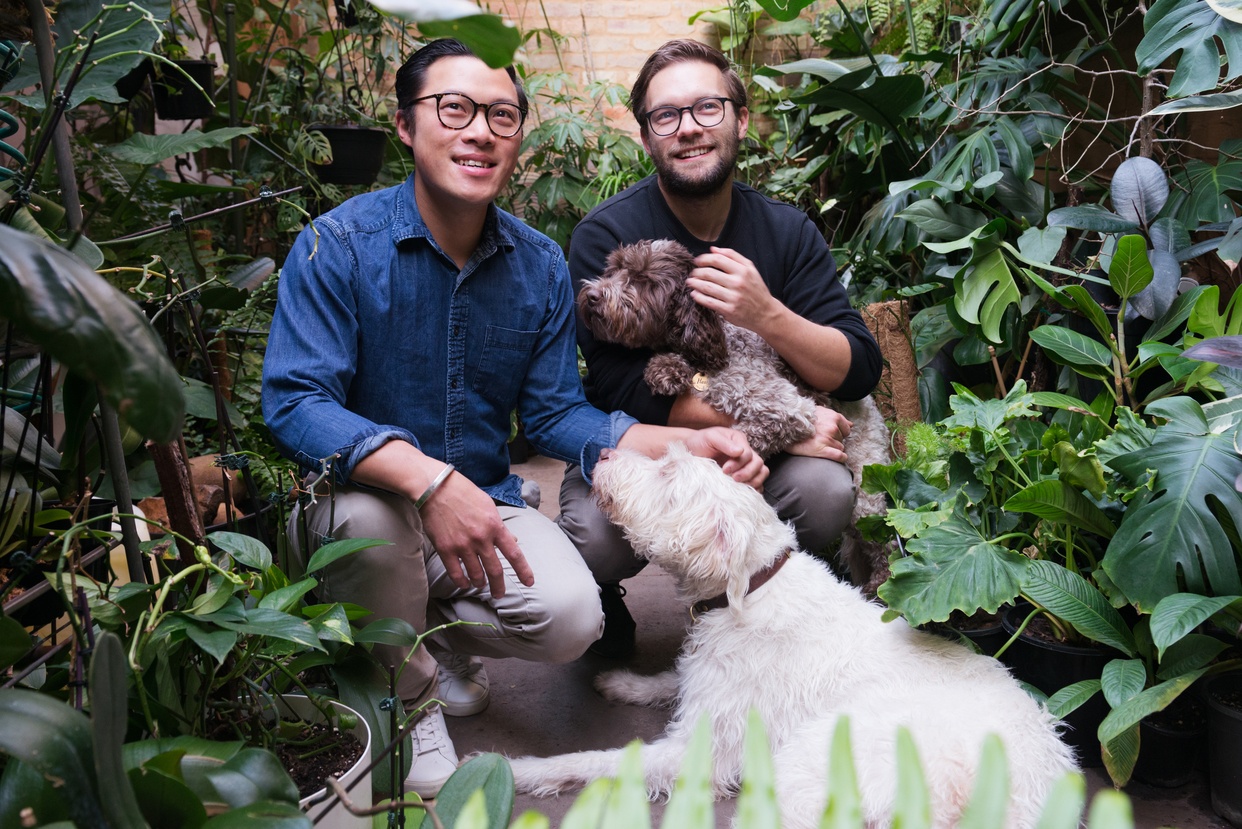
Dog-friendly plants
Plants that are good for dogs
The good news is there are many beautiful and easy to care for plant species that can thrive alongside dogs. The Plant Society co-founder (and ultimate green-thumb) Jason Chongue’s personal favourite is the Wax Plant (Hoya). With glossy foliage and pretty star shaped flowers they’re a great fit for many homes, as “They come in a range of leaf forms, textures, and also flower with the right conditions.” Most importantly, “They are safe around cats or dogs and also are a breeze to care for.”
If you’re specifically after flowers, sweet-smelling African Violets (Saintpaulia) create a lovely ambiance for you and your pet. Although beware, they can be quite delicate so are best suited to more confident gardeners.
For something hardier consider a Spider Plant (Chlorophytum Comosum). Well known as the cursed botanists best mate they’re easy to care for and have the added benefit of removing toxins from the air.
When it comes to style (and looking good on Instagram) Boston Ferns (Nephrolepis Exaltata) and Areca Palms (Dypsis Lutescens) offer vibe and drama without putting your pets at risk. Both are attractive and tough(ish) so will withstand the odd bump or bite. While you don’t need to be a horticulturist to see them thrive, they do have specific position and watering preferences — take the time to find them a perfect spot.
Keeping your plants safe from dogs
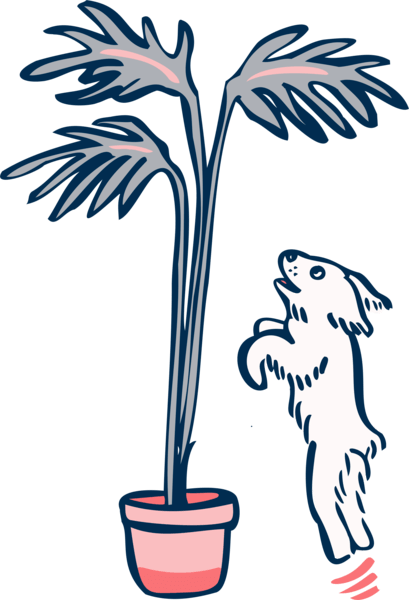 When considering the cohabitation of plants and dogs, it’s not just a matter of keeping your pet safe. It pays to consider what damage your pal could do to your vegetation.
When considering the cohabitation of plants and dogs, it’s not just a matter of keeping your pet safe. It pays to consider what damage your pal could do to your vegetation.
Jason observes that, “We have found plants with dense rigid foliage can cope with the odd tail wag…Ponytail Palms (Beaucarnea Recurvata) have strong foliage, making them typically harder to destroy.”
Many succulents are as safe as they are tough (perfect for pets and less confident gardners). Burro’s Tail, Aeonium Arboreum, Tender Sedum, and varieties of Haworthia and Echeveria are so low stress that you and your dog will forget they’re even there.
If you want something more dramatic consider a Cast Iron Plant (Aspidistra Elatior). As the name hints at, they’re resilient and low maintenance. But their large, lush leaves still make a visual impact.
A final option is to remove temptation completely. Staghorn Ferns (Platycerium) can be mounted to a wall or hung from a basket off the ground. Dramatic air plants like Bromeliads (Bromeliaceae) are able to grow as soil-free epiphytes attached to a log, mount, or hung up by themselves.
Plants to Avoid
It can be tricky to definitively say what is and isn’t a safe plant for a dog to be around. But there are several popular varieties that should be kept out of any dog’s home. Zanzibar Gems (Zamioculcas zamiifolia), Peace Lilies (Spathiphyllum) and Rubber Plants (Ficus elastica) are all on Jason’s “watch out” list.
While Boston Ferns and Areca Palms are fine, similar looking varieties can be very toxic. Sago Palms (Cycas revoluta), English Ivy (Hedera), and Asparagus Fern (Asparagus aethiopicus) are all no-nos around dogs. Telling the difference between a good option and a dangerous one can be confusing, so if you are bringing home a new pet or plant double check it’s safe.
It is always worth being extra careful, but Jason does note that sometimes the level of danger depends on the specific pet. “Some dogs and cats are not interested in plants and others find them a joy to eat and play with.” So it’s vital to be aware of how your pet behaves around them. If they’re chewers who seem very interested in every pot then don’t risk it, remove any species that could cause trouble. Also, pay extra close attention on walks (more on that in a moment).
But if your pooch couldn’t care less and barely notices your plants, you might be able to get away with just moving problematic varieties to a position they can’t reach.
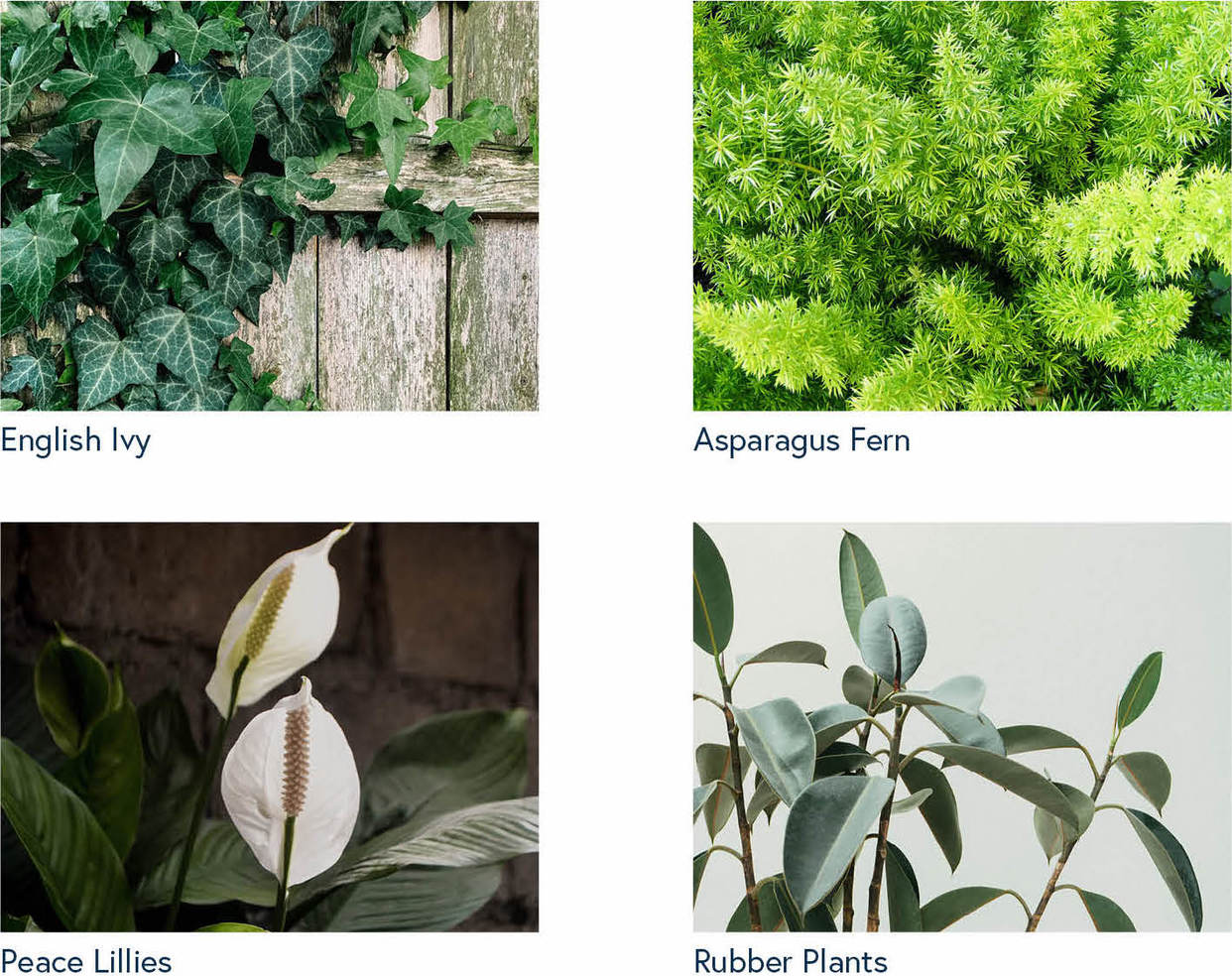
The not so great outdoors
Pet and plant safety isn’t only a topic for the home. Make sure you’re alert when you’re outside too. “There are a large number of plants you will encounter outdoors that are toxic and dangerous to your dogs,” warns Jason. “As with indoors, it’s best to be cautious and monitor how your dog reacts to their outdoor environment. Much like you would monitor hazards around cars and dangerous objects, keep an eye on how your dog reacts to plants.”
Being vigilant outside means avoiding two major kinds of species. The first are “any sharp or prickly plants that might cause harm”. They can be easier to avoid because “Often you will find your dog will learn to steer clear of sharp plants like cacti and Australian natives.”
The second (and trickier) varieties are those they can ingest. “When it comes to eating foliage, I personally never leave my dogs unattended until I’ve understood how they have responded to their environment,” advises Jason. In short: pay attention, watch what they’re doing, and if they act oddly or you think they may have eaten something dangerous, call an emergency vet immediately.
How to Pet-Proof Your Plants
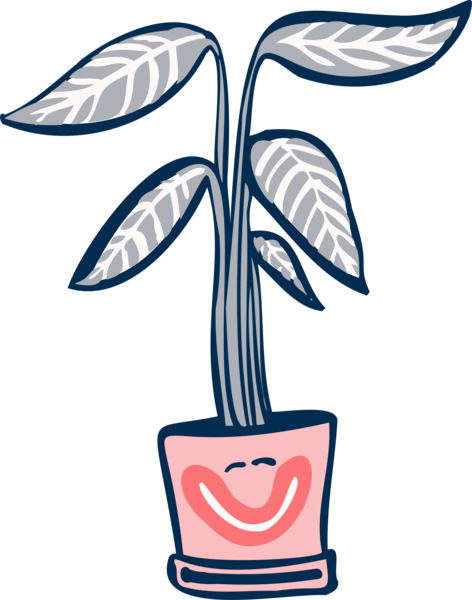 As mentioned, sometimes our dogs are more dangerous to our plants than vice versa. Just as some pets can be around poisonous species their whole lives and never run into trouble (or feel tempted to take a bite) even the sturdiest plant in the world can’t survive being dug up every night.
As mentioned, sometimes our dogs are more dangerous to our plants than vice versa. Just as some pets can be around poisonous species their whole lives and never run into trouble (or feel tempted to take a bite) even the sturdiest plant in the world can’t survive being dug up every night.
As the owner of two dogs (and over 400 plants) Jason is familiar with coordinating both. Reflecting on his own experience, he suggests that distraction is often the best insurance. “Ingrid and Hans [his pups] are not fazed by plants at all. Instead, we make sure to have plenty of toys to keep them busy during the day when we are at work.” As mentioned, Jason and his partner Nathan took the time to monitor their dogs to understand what plants they paid attention to and what they ignored. Their goal was to “understand their personalities and make home accommodate them.”
In their case they observed that “it was important Ingrid and Hans didn’t become bored but instead tired them out.” Specifically, that meant “making sure they have a range of physical and mental challenges…Regular walks and a range of toys keep [them] busy and happy. They are often sleeping from being so tired they don’t bother tearing the house apart.”
Whether they’re bothering your greenery or not, boredom should always be addressed in dogs. But if they still find energy to destroy your green efforts, even after the most exhausting workout, sometimes it’s quicker (and easier) to change the plant, not the pet. As mentioned, remove them out of the jumping and chewing zone by placing plants somewhere high or hang them. Just remember a toxic plant off the ground can be dangerous, keep a keen eye out for any dropped leaves and debris.
Pet-Friendly Plant Care
Responsible gardening doesn’t stop when you’ve selected the lowest-risk plant species you can find and distracted your dog from destroying it. You need to ensure that your continued plant care is equally considered. “Safe practice when it comes to pesticides and fertilisers is important,” cautions Jason. He recommends you “treat your plants with organic products that are safe around your pets.”
Also, consider other chemical products you use at home for things like cleaning. They need to be double-checked to ensure they won’t make any dogs (or plants) sick. Occasionally you may have to break from your organic routine to treat specific problems. In which case Jason urges you to “keep curious pets away from areas where you have treated plants with chemicals” and securely lock away all products when they’re not in use.
Ultimately Jason and The Plant Society team believe that keeping pets and plants safe and well doesn’t need to be a lot of work. “My biggest tip is to monitor your pets and build up your knowledge of what works and doesn’t…Always understand your pets and do research. It’s important not to stress to the point where you don’t have any plants in your home.”
Plant First Aid
It should be said that all the monitoring, research, and rearranging in the world can’t guarantee that your dog will never get sick. If they become unwell, or you notice them acting strangely, it’s vital you contact an emergency vet immediately. Tell them if your pet has a habit of chewing or snooping around your plants — even if you’re sure they’re non-toxic. Anyone can make a mistake and misidentify a species. Always play it safe, be alert, and help them identify any issues.
Hope you found this useful. And remember – feed them Scratch, not your plants 😉
Huge thanks to The Plant Society for their advice and help putting this guide to indoor plants and dogs together. Stock up on plants for your home online or at one of their 3 stores here.
